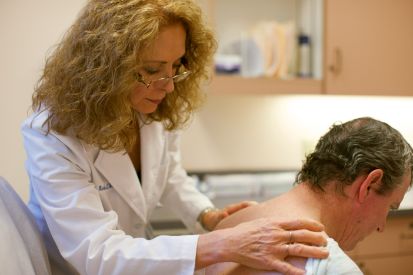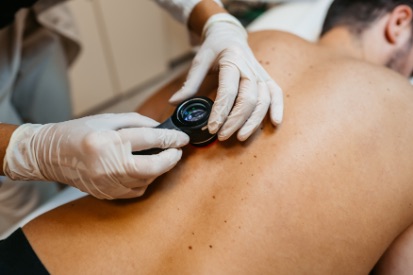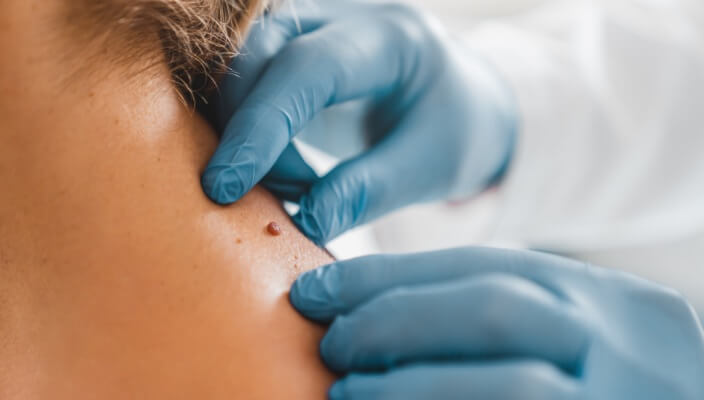Signs You Should Schedule a Skin Cancer Screening Immediately
When Do You Need to See A Dermatologist?
 Skin cancer is one of the most common forms of cancer worldwide, affecting millions of individuals across all age groups every year. While this fact can be daunting, it’s important to remember that early detection can save lives. The key to early detection? Paying attention to your skin and recognizing when it’s time to schedule a skin cancer screening or, Total Body Skin Exam. Proactive skin health management can help you catch potential skin cancers before they become dangerous, and regular screenings play a crucial role in this process.
Skin cancer is one of the most common forms of cancer worldwide, affecting millions of individuals across all age groups every year. While this fact can be daunting, it’s important to remember that early detection can save lives. The key to early detection? Paying attention to your skin and recognizing when it’s time to schedule a skin cancer screening or, Total Body Skin Exam. Proactive skin health management can help you catch potential skin cancers before they become dangerous, and regular screenings play a crucial role in this process.At Cumberland Skin Surgery and Dermatology, we’re committed to educating our patients on the warning signs of skin cancer. Knowing what to look for can make all the difference. Let’s walk through the specific symptoms and skin changes that should prompt an immediate visit to your dermatologist.
The ABCDEs of Melanoma: Dermatologists use the ABCDE Rule to Assess Changes in Moles
If you observe any of these changes, it’s crucial to have your mole checked by a dermatologist. These warning signs can sometimes indicate melanoma, a dangerous form of skin cancer that can spread if not caught early:
Asymmetry: One half of the mole does not match the other.
Border: The mole's edges are irregular, notched, or blurred.
Color: The mole contains multiple colors, such as different shades of brown, black, or even red.
Diameter: The mole is larger than 6mm, about the size of a pencil eraser.
Evolving: The mole changes in size, shape, or color over time.
Examples of Skin Cancer Screenings



Sign 1: New Growths or Changing Moles
New Moles: If you notice a new mole forming anywhere on your body, it’s important to have it evaluated by a dermatologist. While most moles are benign, new growths that appear later in life can sometimes signal an issue.
Changes in Existing Moles: Keep an eye on moles that have existed for a long time. If a mole begins to change in shape, texture, or color, it’s essential to seek professional advice.
Sign 2: Odd Pigmentation or Discoloration
Skin cancers, including melanoma, can cause uneven or strange pigmentation. If you notice any sudden or unexplained changes in your skin’s color, especially if they persist, it’s time to book a skin cancer screening.
Sign 3: Swelling, Redness, and Inflammation
Swelling or redness around a mole, growth, or patch of skin is another red flag that shouldn’t be ignored. In some cases, these signs may indicate inflammation but can also signal that a mole or skin growth is undergoing malignant transformation. If your skin looks swollen, feels tender, or has persistent redness, especially around a growth or mole, seek professional evaluation immediately.
Sign 4: Itching, Pain, or Tenderness
Any mole or skin growth that suddenly becomes itchy, painful, or tender to the touch should be checked out. These sensations are often subtle but can be early indicators that something is wrong. Unexplained discomfort is your body’s way of signaling that something needs attention.
Sign 5: Non-Healing Sores or Lesions
A sore that won’t heal or keeps reopening is a potential sign of skin cancer. If you have a sore that bleeds, oozes, or crusts over and doesn’t seem to get better with time, it’s crucial to schedule a screening. Non-healing sores are often associated with basal cell carcinoma, a type of skin cancer that can be treated effectively if caught early.
Sign 6: Changes in Skin Texture
Rough, scaly, or dry patches of skin, especially in areas frequently exposed to the sun, like the neck, hands, and face, may also indicate early signs of skin cancer. These patches are often mistaken for dry skin or eczema, but persistent changes in texture should be evaluated by a dermatologist, particularly if they don’t improve with moisturizing or other treatments.
Sign 7: Bleeding, or Oozing Moles
Bleeding or oozing from a mole or skin growth is an immediate red flag. If you notice any liquid coming from a mole, it’s important to have it checked as soon as possible. Skin cancer can cause the skin to break down, leading to bleeding or discharge.
The Importance of Vigilance and Proactive Skin Care
Staying vigilant about your skin’s health is the best way to ensure early detection of skin cancer. If you’ve noticed any new growths, changes in moles, or other skin abnormalities, don’t wait—schedule a Total Body Skin Exam (TBSE). At Cumberland Skin Surgery and Dermatology, we offer comprehensive skin screenings to help detect issues early and provide expert care.
Don’t wait for warning signs to worsen. Proactively managing your skin health can make a life-saving difference. Contact Cumberland Skin Surgery and Dermatology today to schedule your skin cancer screening.

Schedule Your Skin Cancer Screening at Cumberland Skin
Early detection is the key to curing melanoma. If you notice a strange spot or suspicious mole on your skin, come see us right away. We’d also love to get your annual skin exam on the books!
From Our QualDerm Family of Brands: Total Body Skin Exams
Featured Products

EltaMD UV Luminous Broad-Spectrum SPF 41
Get a shade more luminous with our newest lightly tinted sunscreen that brings skin care and essential sun care together. EltaMD UV Luminous Broad-Spectrum SPF 41 uses antioxidants such as linoleic acid and vitamin E to protect your skin from free radicals and diminish UV-related signs of aging. It’s light rosy tint and semi-matte finish blends into the skin seamlessly and blurs imperfections. EltaMD UV Luminous Broad-Spectrum SPF 41 sunscreen is ideal for those seeking non-greasy UV protection with all physical active ingredients. Net wt 1.7 oz/48 g

EltaMD UV Physical SPF 41
For oil-free sun protection with just a touch of color, EltaMD's lightly tinted UV Physical is a healthy choice. This chemical-free mineral sunscreen has antioxidants to neutralize free radicals. Water-resistant UV Physical withstands water, humidity and perspiration. 3 oz
Related Blog Posts

- Skin Cancer
- General Dermatology
- Skin Exams
- Sun Safety
If your dermatologist finds a suspicious mole during your TBSE, hey want to perform a skin biopsy.
Read More
- Skin Cancer
- Skin Exams
With skin cancer cases rising year after year, it’s no surprise that people are itching to learn more about this life-threatening skin disease
Read More
- Skin Cancer
- Skin Exams
It’s time to face the facts: skin cancer can develop in individuals of all skin colors, including those with darker skin tones.
Read More


